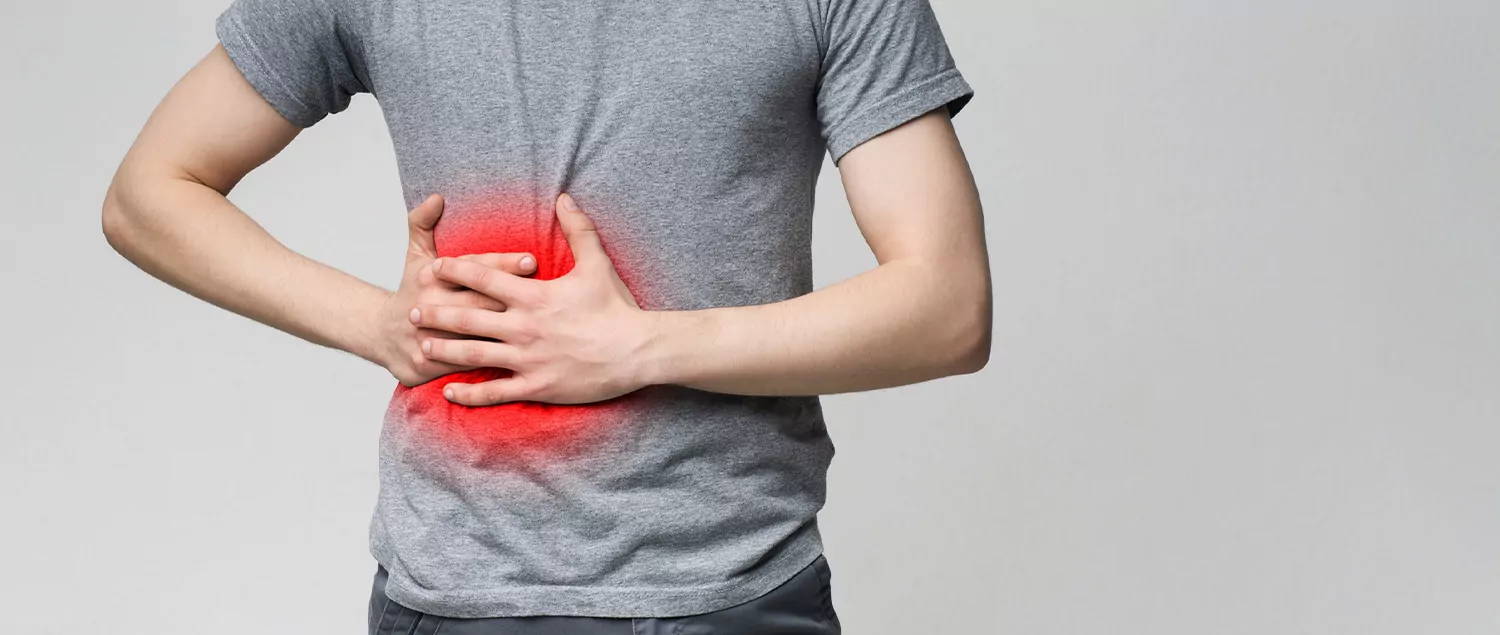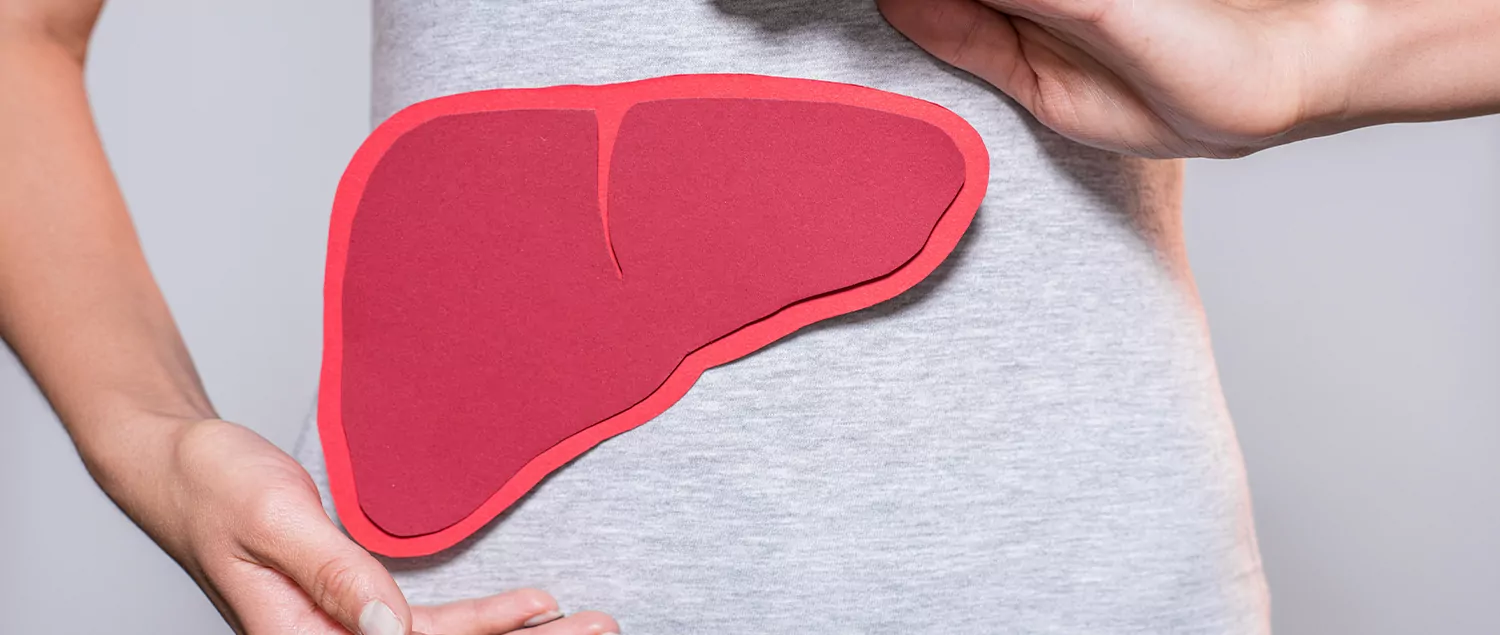What are the Symptoms of Fatty Liver Disease?
What Causes Fatty Liver Disease?
Hepatic steatosis, also known as fatty liver disease, is described as fat accumulation in the liver.
In fatty liver, at least 5% of the liver weight is expected to be intrahepatic triacylglycerol (lipid).
It is often caused by factors such as excessive and chronic alcoholism, viral infections, drug use, etc.
It can be caused by factors such as excessive and chronic alcoholism, viral infections, drug use, etc.
Fibrosis and inflammations that develop in parallel with hepatic steatosis can cause cirrhosis and liver failure.
In this context, early diagnosis and treatment of fatty liver disease is important.
Mild and early stage hepatic steatosis can be corrected with factors such as healthy dietary interventions, lifestyle changes and physical activity.
If you are looking for an answer to the question “What is fatty liver disease?” you can read the rest of the article.
What is Fatty Liver Disease?
Fatty liver disease is the general name for liver diseases affecting non-alcoholic people.
It is generally characterized by fatty deposits in the liver.
When only fatty liver disease occurs, it is called non-alcoholic fatty liver disease.
However, when there is inflammation and damage to liver cells along with fatty liver, it is known as non-alcoholic steatohepatitis.
Fatty liver disease is often associated with obesity, insulin resistance, diabetes, metabolic syndrome and dyslipidemia.

What are the Symptoms of Fatty Liver Disease?
Non-alcoholic fatty liver disease can progress silently as it usually develops without symptoms.
However, fatigue, discomfort or pain in the right upper abdomen can be considered symptoms.
In addition, specific symptoms may occur in cases of non-alcoholic steatohepatitis.
Symptoms of fatty liver disease may include
- Shortness of breath
- Abdominal swelling,
- Swelling in the legs,
- Splenomegaly
- Itching of the skin,
- Weight loss,
- Spider-like blood vessels in the skin.
There are various symptoms that can be given for “How to recognize fatty liver disease?”.
When the damage in these cases becomes chronic, the risk of cirrhosis can increase.
Fatty liver disease that develops into cirrhosis can lead to dangerous symptoms such as muscle wasting, confusion, internal bleeding and liver failure.
Fatty Liver 1.
Stage Symptoms
Fatty liver 1.
Stage 1 symptoms may start with high levels of steatosis.
Steatosis is a large accumulation of fat in the liver cells.
Inflammation is usually not seen at this stage.
Early-stage steatosis may be detected during tests for other causes.
Non-alcoholic fatty liver disease is often asymptomatic.
Fatty Liver 2.
Stage Symptoms
Moderate fat may include inflammation.
Fatty liver 2.
Stage 2 symptoms may include a combination of steatosis and inflammation of some severity.
There may be no serious symptoms at this stage.
However, if treatment is not provided, damage to liver cells may begin to occur.
Fatty Liver 3.
Stage Symptoms
Fatty liver 3.
Stage 3 symptoms may occur when inflammation becomes persistent.
At this stage, inflammation can spread around the liver and blood vessels, forming scar tissue.
Fibrosis is seen in stage 3.
In stage 3, the liver can continue to function normally.
As fatty liver disease progresses, the risk of cirrhosis and liver failure may increase.
What Causes Fatty Liver Disease?
The question “Why does fatty liver disease occur?” can be explained by the presence of various factors.
The main causes include increased synthesis of fatty acids in the liver, decreased oxidation of free fatty acids and increased delivery to the liver, and decreased synthesis of very low density lipoprotein (VLDL).
In addition, factors contributing to fatty liver disease may include
- Oxidative stress in hepatocytes,
- Under- or over-nutrition, starvation diets,
- Medication use,
- Homocystinuria and glycogen storage disorders, etc.
metabolic abnormalities,
In addition, health problems such as celiac disease and Wilson’s disease can be among the causes of fatty liver disease.
How does fatty liver disease go away?
Managing or eliminating the drivers of fatty liver disease may slow the development of hepatic steatosis.
Dietary interventions may be recommended for individuals with insulin resistance, diabetes and hyperlipidemia.
A healthy diet can be established with the help of a dietitian to keep blood sugar and lipids within ideal ranges.
At the same time, overweight and obesity is an important factor that can lead to fatty liver.
Therefore, supporting weight loss and keeping it within ideal ranges can answer the question “How does fatty liver disease go away?” and contribute to the recovery of the case.

What is good for fatty liver disease?
Fatty liver can be controlled with the combined application of some precautions and treatment methods.
The question “What is good for fatty liver?” can be answered as follows:
- Limit consumption of processed products high in fat, sugar and salt,
- Establishing a healthy diet that includes fresh fruits and vegetables and whole grains,
- Vaccination against hepatitis A and B and pneumococcal diseases,
- Regular physical activity,
- Use of nutritional supplements such as vitamins and minerals under the supervision of a doctor.
Unnecessary drug use is not recommended, except for drugs used in the treatment of existing diseases.
For fatty liver herbal treatment applications, first consult your doctor.
Fatty Liver Treatment
The main applications of fatty liver disease treatment include changes in lifestyle.
Ensuring weight loss and maintaining the ideal weight, increasing physical activity, limiting or quitting alcohol can be shown among these practices.
Lipid and glycemic values should be monitored during the treatment process.
Bariatric surgery may be recommended for morbidly obese patients.
There should be a loss of approximately 3-5% of body weight for the improvement of hepatic steatosis to be recognized.
However, in some cases, this rate may be required around 10%.
Alcohol cessation in heavy drinkers is an important step in the treatment of hepatic steatosis.
However, drugs with hepatotoxic properties may need to be discontinued under the supervision of a doctor.
Within the scope of hepatic steatosis treatment, drug therapy and liver transplantation may be preferred.
However, liver transplantation is considered in advanced fatty liver disease and cirrhosis.
Is Fatty Liver Dangerous?
Early-stage hepatic steatosis is generally not a dangerous condition.
Fatty liver, which progresses silently, can be reversible and cured when diagnosed early.
However, undiagnosed and untreated fatty liver can lead to serious liver damage.
Cirrhosis and liver failure are examples of life-threatening liver damage.
In addition, high fat accumulation in the liver can trigger health problems such as hypertension, diabetes and insulin resistance, kidney diseases, etc.
kidney diseases, etc.
The combination of diabetes, hypertension and fatty liver damage can pose a risk for cardiovascular diseases.
The answer to “Is fatty liver dangerous?” may vary from person to person.
Frequently Asked Questions
What are the Skin Symptoms of Fatty Liver Disease?
Symptoms of fatty liver disease on the skin are usually not seen in the early stages.
Symptoms on the skin and face may generally be mild.
Edema or swelling on the face and skin, jaundice in the eyes and skin, itching may be a symptom of advanced fatty liver.
However, in individuals who develop insulin resistance, dark color may appear in curved areas such as the neck.
Absorption of some nutrients may decrease in fatty liver cases.
Zinc mineral can be seen at low values in non-alcoholic fatty liver patients.
As a result, there is a possibility of rash and irritation around the mouth
Does Stress Cause Fatty Liver Disease?
Hyperinsulinemia and free fatty acids may increase the release of radicals and peroxidation of fats.
This may have damaging effects on hepatocytes.
Oxidative stress in hepatocytes, which are liver cells, can lead to the activation of stellate cells.
As a result, collagen production and inflammation may occur.
Chronic stress in liver cells and resulting liver damage can lead to an increased risk of hepatic fibrosis and fatty liver disease.
Therefore, oxidative stress can be given as an example to the question “Does stress cause fatty liver disease?”
Does a thin person have fatty liver disease?
Although fatty liver is usually associated with overweight and obesity, it can also occur in lean and normal weight individuals.
Underweight people with fatty liver account for about 20% of all cases.
In addition, fatty liver in lean people can cause similar cardiovascular problems compared to overweight patients.
Metabolic abnormalities can lead to similar problems in lean and obese people.
However, susceptibility to gut microbiota, genetic predispositions, body composition and environmental factors may vary
Does Fatty Liver Disease Cause Pain?
“Does fatty liver disease cause pain?” is one of the questions frequently asked by individuals.
Non-alcoholic fatty liver disease may develop without any symptoms in some individuals.
In addition, abdominal swelling, discomfort and abdominal pain may be mild or severe.
A feeling of fullness and pain, especially in the upper right abdomen, can be prominent symptoms of fatty liver.
Fatigue, restlessness, jaundice and itching, and the appearance of spider-like blood vessels are other symptoms that may occur in combination with pain.
Does Walnut Cause Fatty Liver?
Walnuts, one of the nuts, are rich in fatty acids and other essential nutrients.
About half of the fat content of walnuts consists of monounsaturated and polyunsaturated fatty acids.
Raw or roasted walnuts have high levels of omega-3 and omega-6 fatty acids.
In addition, they are high in the antioxidant vitamin E, dietary fiber, phytosterols and polyphenols.
These bioactive components can reduce low-density lipoprotein (VLDL) concentrations and levels of free radicals.
In this context, walnut is a food that can be frequently preferred in a healthy diet.
Therefore, in response to the question “Does walnut cause fatty liver?”, it cannot be said that walnut causes fatty liver.
Does Fatty Liver Itch?
For the question “Does fatty liver disease cause itching?”, non-alcoholic fatty liver disease usually does not cause any symptoms.
On the contrary, itching may occur in the presence of non-alcoholic steatohepatitis and cirrhosis.
Itching alone may not be considered as a sign of fatty liver disease.
Therefore, it should be followed up together with other symptoms.
Cirrhosis, which is the advanced stage of fatty liver, may manifest itself as jaundice of the eyes and skin, swelling of the legs and ankles, itching, swelling in the abdomen
What Harm Does Fatty Liver Do to the Body?
Fatty liver disease can negatively affect other body activities.
When liver cells responsible for many metabolic functions are damaged, health problems may arise.
In particular, insulin resistance as a result of deterioration in blood sugar values, type 2 diabetes, hypertension as a result of increased blood pressure, kidney disease, cardiovascular diseases can be conditions affected by fatty liver.
Untreated hepatic steatosis can lead to liver failure, cirrhosis, liver cancer, esophageal varices, etc.
can lead to risky health problems such as liver failure, cirrhosis, liver cancer, esophageal varices, etc.




